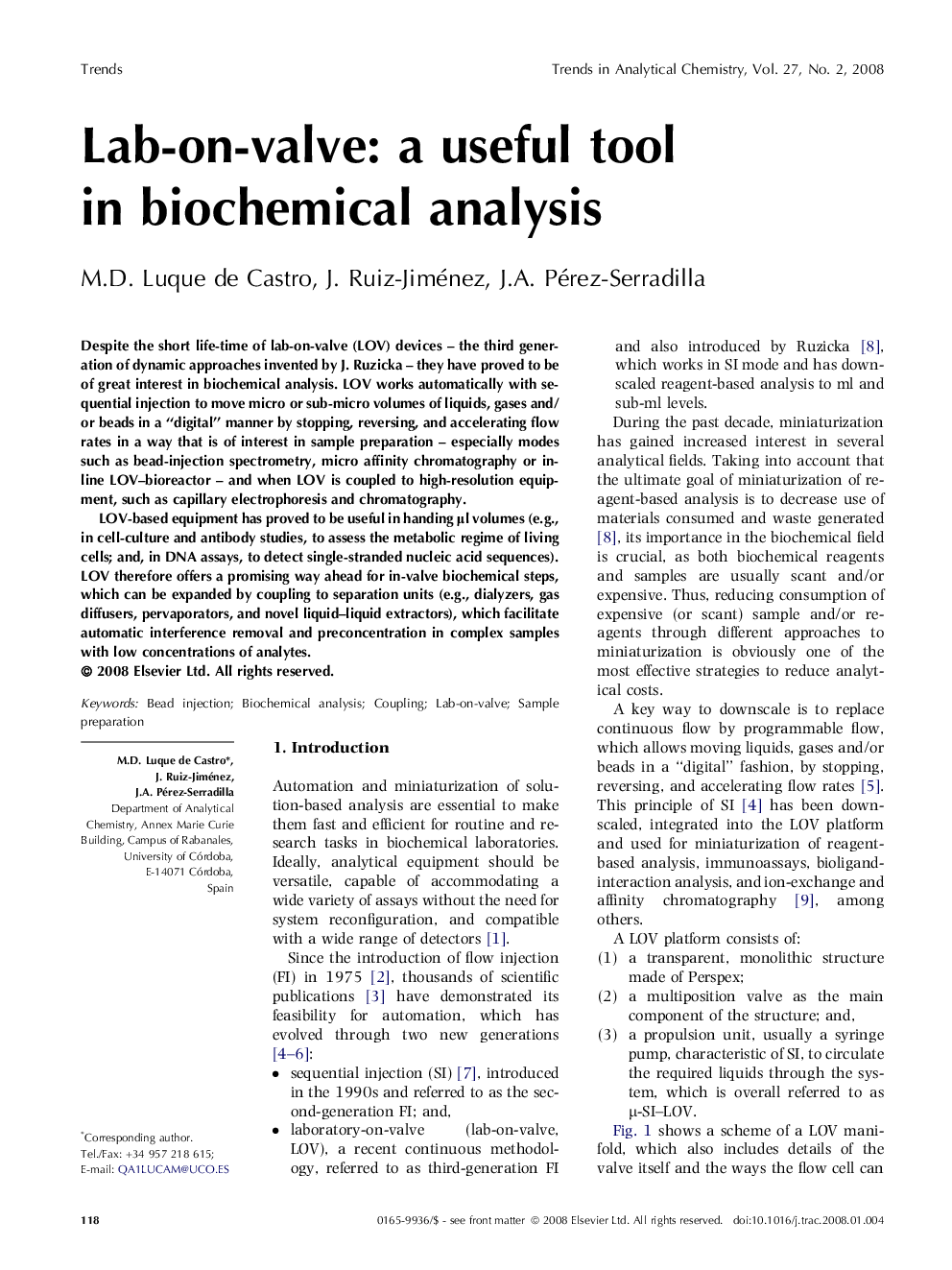| Article ID | Journal | Published Year | Pages | File Type |
|---|---|---|---|---|
| 1248726 | TrAC Trends in Analytical Chemistry | 2008 | 9 Pages |
Despite the short life-time of lab-on-valve (LOV) devices – the third generation of dynamic approaches invented by J. Ruzicka – they have proved to be of great interest in biochemical analysis. LOV works automatically with sequential injection to move micro or sub-micro volumes of liquids, gases and/or beads in a “digital” manner by stopping, reversing, and accelerating flow rates in a way that is of interest in sample preparation – especially modes such as bead-injection spectrometry, micro affinity chromatography or in-line LOV–bioreactor – and when LOV is coupled to high-resolution equipment, such as capillary electrophoresis and chromatography.LOV-based equipment has proved to be useful in handing μl volumes (e.g., in cell-culture and antibody studies, to assess the metabolic regime of living cells; and, in DNA assays, to detect single-stranded nucleic acid sequences). LOV therefore offers a promising way ahead for in-valve biochemical steps, which can be expanded by coupling to separation units (e.g., dialyzers, gas diffusers, pervaporators, and novel liquid–liquid extractors), which facilitate automatic interference removal and preconcentration in complex samples with low concentrations of analytes.
